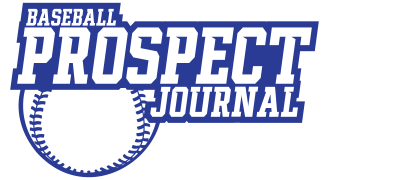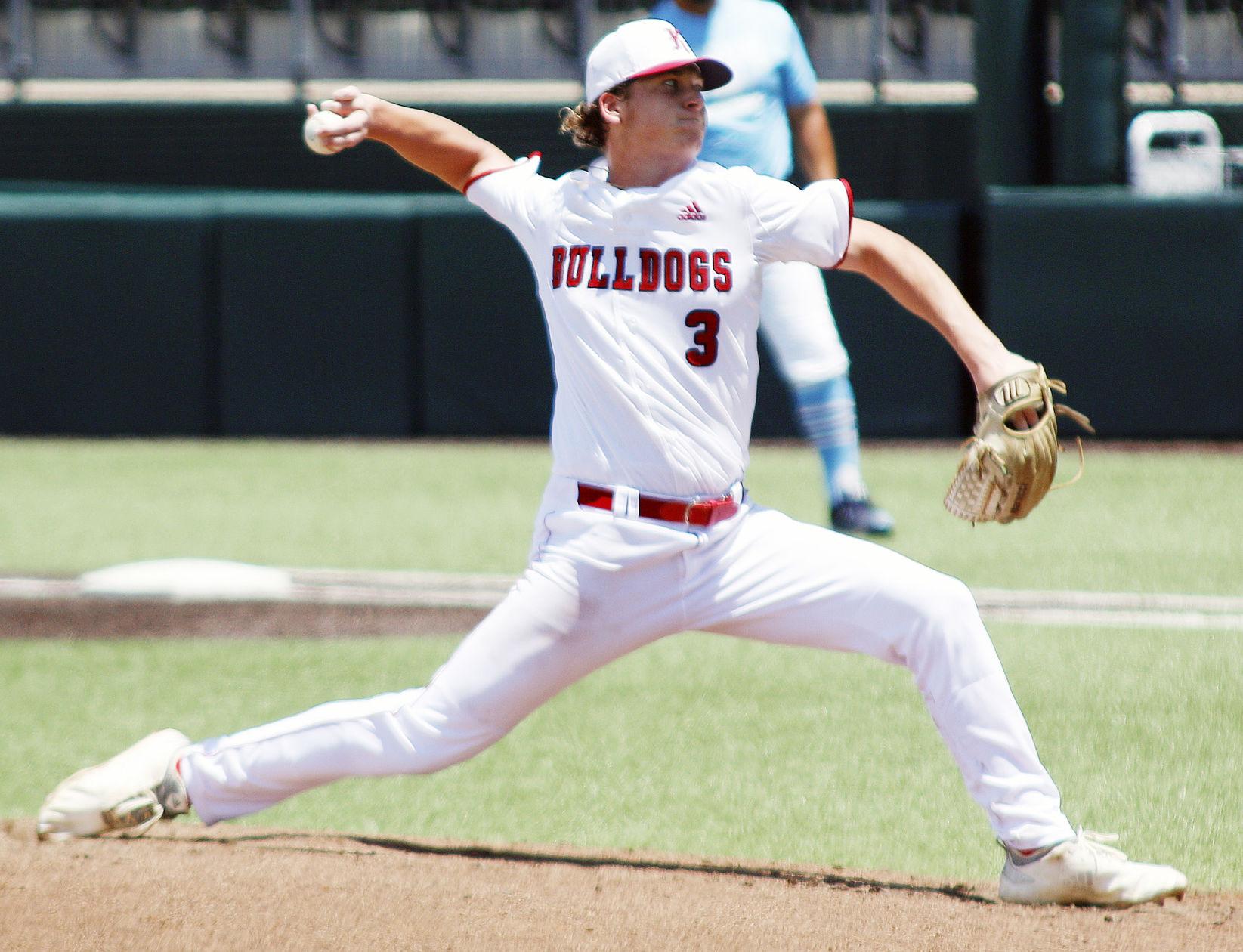Chase Hampton of Kilgore, Texas is one of the top prep players in the country.
Hampton is an intriguing right-handed pitcher who could hear his name called in the first five rounds of June’s MLB draft. He also is at Texas Tech commit, giving him two viable options for the next step in his baseball career.
“Now that I don’t get to play anymore (due to the coronavirus pandemic), and I’m getting more and more phone calls every day, it’s kind of opened up my eyes that it’s really soon,” said Hampton on the draft. “I thought when I committed to Tech that in a couple of years that I would get drafted as a junior or senior. But now that it has come quicker, it’s just unreal.”
Hampton is a 6-foot-3, 210-pound righty who throws a four-seam fastball, two-seamer, curveball, slider and changeup from a three-quarters arm slot.
This spring, his fastballs sat in the low-to-mid-90s. He doesn’t throw one fastball more than the other but describes his two-seamer as a “disgusting pitch” that he can throw in any count and has the best control of compared to his other pitches.
His 12-6 curveball is an above-average offering that he uses as his strikeout pitch. Hampton has two different grips for his slider with one grip resulting in a hard, sharp break while the other grip is more of a true slider.
His changeup is a work in progress, but he has had success with throwing it against left-handed hitters.
“My competitiveness is my biggest strength,” Hampton said. “I like to go after guys no matter who’s up there at the plate. I like to get them in the box and out of the box as fast as possible.”
In the offseason leading up to his senior season, Hampton worked with highly-regarding pitching coach David Evans, who’s instructed numerous well-known pitchers including Aroldis Chapman, Jameson Taillon and Shane Baz.
Evans helped Hampton with his mechanics in hopes of helping him gain more velocity on his fastball and improve his command. Hampton’s back leg would “collapse” when he threw, and he worked with Evans on keeping the leg steady and sturdy to have better balance and generate more power, he said.
Hampton hopes to continue to refine his mechanics, including increasing his arm speed, as he prepares for the next step in his baseball career, he said.
“He taught me a lot about if I was to use my mechanics better that I wouldn’t have to put as much force into my ball,” Hampton said. “The ball would come out of my hand a lot smoother. With me working on that, it’s true. The first time I threw on the mound, it didn’t feel like I had to chuck the ball. It was much smoother and easier.”
Hampton committed to Texas Tech on Sept. 16, 2018. Less than two years after giving his verbal commitment, Hampton may never step foot on Texas Tech’s campus as a student-athlete in the fall.
Regardless of if he embarks on a professional career this summer or honors his commitment to Texas Tech, Hampton hopes to make a career out of baseball, he said.
Hampton is motivated by his older brother Michael, who graduated high school in 2017. Michael didn’t have a chance to play beyond high school due to thoracic outlet syndrome, which is a group of disorders that occur when certain blood vessels or nerves are compressed.
“My brother and my family motivate me to play baseball,” Hampton said. “He had the chance to get drafted out of high school, but he had thoracic outlet syndrome. It hurt him, and he went to college for one year and couldn’t play. He also didn’t get to play his junior and senior years of high school. It hurts me to see that, and I want to make his dream come alive through me.”
Read more stories on top 2020 MLB draft prospects here.
Dan Zielinski III has covered the MLB draft for five years. He’s interviewed 191 of the top draft prospects in that period, including three No. 1 overall picks. Multiple publications, including Baseball America, USA Today and The Arizona Republic, have quoted his work, while he’s appeared on radio stations as a “MLB draft expert.” Follow him on Twitter @DanZielinski3.



[…] Chase Hampton motivated by family […]